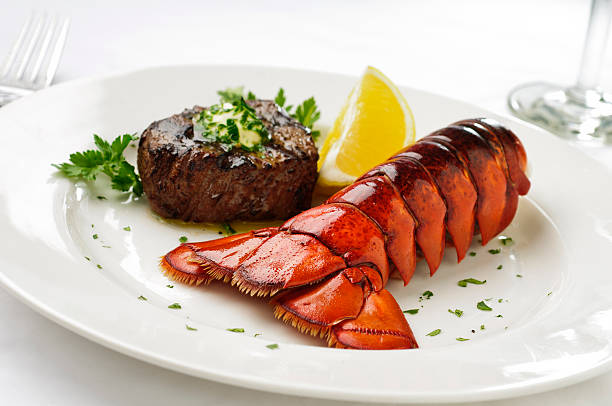Lobster tail is a popular delicacy that is enjoyed by many people around the world. It is a rich source of protein and essential nutrients, making it a healthy addition to any diet. However, it is also high in calories, so it is important to be aware of the nutritional information when consuming this delicious seafood.
One of the most important things to consider when looking at the calorie content of a lobster tail is the size of the tail. The larger the tail, the more calories it will contain. On average, a 4-ounce lobster tail contains around 110-130 calories. This is equivalent to about 6-7% of the daily recommended calorie intake for an average adult.
However, the calorie content of a lobster tail can vary depending on how it is prepared. For example, a lobster tail that is steamed or boiled will have fewer calories than one that is fried or grilled. This is because the cooking methods that use oil or butter can add extra calories to the dish.
A 3-ounce serving of cooked lobster tail contains around 84 calories. This serving size is considered to be a small portion, as most lobster tails are larger, with a typical weight of around 6-8 ounces. A 6-ounce lobster tail contains around 168 calories, and an 8-ounce tail contains around 224 calories.
Lobster tail is a lean protein source, with only 1 gram of fat per 3-ounce serving. It is also a good source of omega-3 fatty acids, which are beneficial for heart health. Additionally, lobster tail is low in carbohydrates and cholesterol, making it a healthy choice for those on a low-carb or low-cholesterol diet.
Despite its low calorie and fat content, lobster tail is high in protein, with around 19 grams per 3-ounce serving. Protein is essential for building and repairing muscle, and also helps to keep us feeling full and satisfied.
Lobster tail is also a rich source of protein, which is essential for building and repairing tissues in the body. A 4-ounce lobster tail contains around 20-25 grams of protein, which is equivalent to 40-50% of the daily recommended intake for an adult.
It is also a good source of essential vitamins and minerals. For example, lobster tail contains high levels of Vitamin B12, which is essential for maintaining healthy nerve cells and red blood cells. It is also a good source of zinc, which is important for maintaining a healthy immune system.
Lobster tail is also a good source of vitamins and minerals, including vitamin B12, zinc, and selenium. Vitamin B12 is important for maintaining healthy nerve cells and blood cells, while zinc is essential for immune system function and wound healing. Selenium is an antioxidant that helps to protect cells from damage.
It is important to note that the nutritional content of lobster tail can vary depending on how it is prepared. For example, if the tail is steamed or boiled, it will retain more of its nutrients than if it is fried or sautéed. To keep the calorie and fat content low, it is best to avoid butter or cream-based sauces and toppings.
In conclusion, a lobster tail is a lean protein source that is low in calories and fat. It is also a good source of vitamins and minerals, including vitamin B12, zinc, and selenium. While it may not be the lowest-calorie seafood option available, a moderate portion of lobster tail can be enjoyed as part of a healthy diet.

 Home
Home Health
Health Diet & Nutrition
Diet & Nutrition Living Well
Living Well More
More












